January 14, 2021
From the Vault: A Portrait of Lady Sopwith
A short history of one of the most glamorous members of any America's Cup challenger afterguards
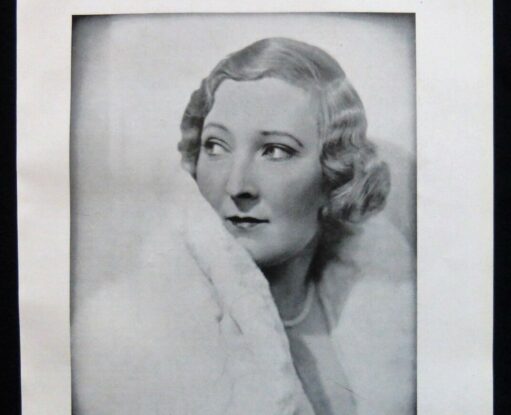
Guest Post by Matthew Bird
Phyllis Brodie Leslie Gordon Sopwith knew how to take a picture. She was regularly photographed at the helm of the America's Cup challengers ENDEAVOUR and ENDEAVOUR II, and always dressed for the occasion. Her official capacity onboard was timekeeper, which she performed when the yachts competed in the 1934 and 1937 America’s Cup races off Newport. The first ENDEAVOUR, a steel-hulled 130 foot yacht that introduced the quadrilateral genoa to J-class racing, came very close to winning the Cup in 1934 against the W. Starling Burgess designed RAINBOW (HMCo. #1233). Some questionable Vanderbilt sportsmanship prevented that victory, and led to the phrase "Britannia rules the waves and America waives the rules." ENDEAVOUR II was built for the 1937 America’s Cup. Phyllis Sopwith crewed both the races, and received extensive press coverage. She wasn’t the only female participant; Gertrude Vanderbilt was onboard RAINBOW for the same two races. But the many striking photographs of Phyllis Sopwith in action made her a more compelling and memorable presence in the public imagination over the course of both challenges.

These photographs are successful because they were designed to be so. Phyllis Sopwith chose her clothes with care to straddle the worlds of fashion and yachting. She isn’t wearing gloves merely to protect her hands, she is wearing white leather gauntlets to help complete the bold contrast of her two-tone ensemble. She wore severe makeup designed to register well in black and white photography. The images capture her mid-action and convey a sense of urgency and vitality. These are not snapshots, they are carefully crafted public relations statements captured by professional photographers.
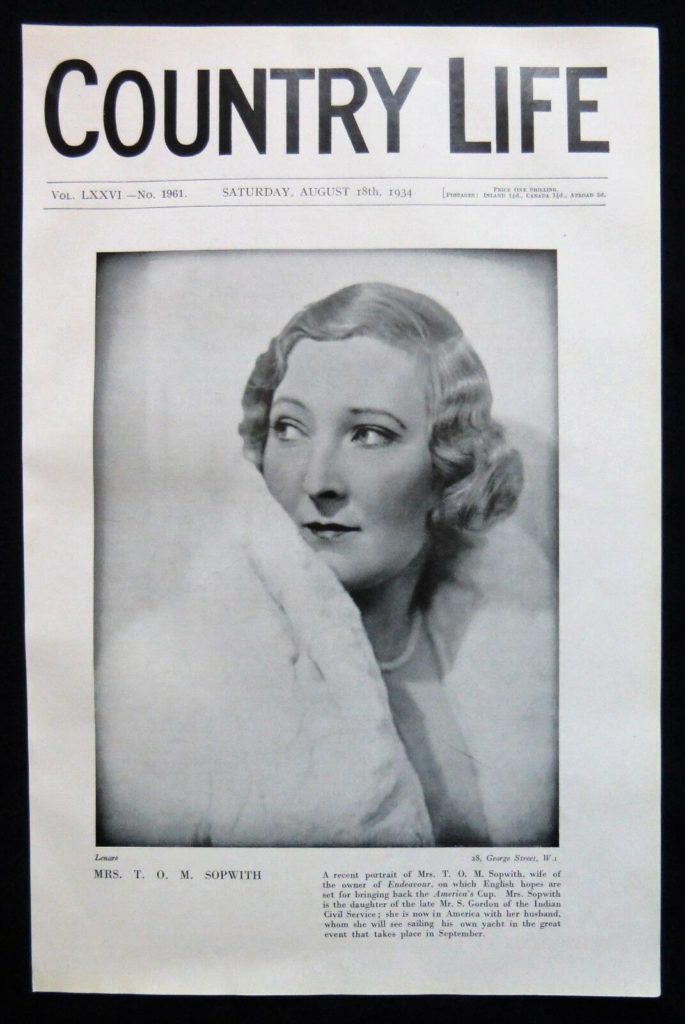
As the second wife of Sir Thomas Octave Murdoch Sopwith, Lady Sopwith assumed a visibility she could not have predicted or prepared for, but certainly embraced. Every picture of her, onboard sailboat, speedboat, yacht, ocean liner, in Pathé Newsreel, or on the cover of society magazines, seems calculated and intentional. She was born in 1892 in Hyderabad, India, where her father was a British civil servant. Her unremarkable childhood led to a mid-war first marriage in 1916 to a young airplane pilot. When she met here second husband T.O.M. Sopwith in 1931, she was thrust into a highly visible and fantastically wealthy new life.
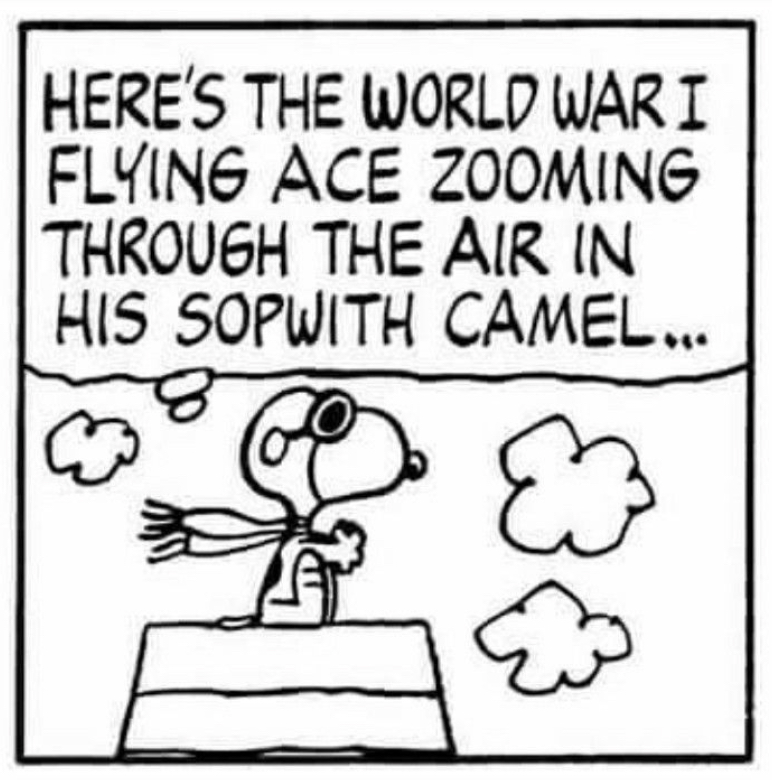
Sopwith is one of those names that seems to pop up in such a wide range of professions and histories that it is hard to imagine they are all the same person. Like W. Starling Burgess here in the U.S., T.O.M. Sopwith was part of the creation and development of the earliest British air travel, speed and sail boat engineering, and automobile progress. As a teenager in 1906 he set up a car dealership in London and took up automobile racing. He bought a hot air balloon, and then graduated to a monoplane in 1910. His aviator license was the 31st issued in Britain, making him one of a very small group of early airplane enthusiasts. Unhappy with the available engineering, he began building his own airplanes in 1913 and became the leading maker in Britain in WWI. Sopwith Aviation Co. produced over 18,000 airplanes for the war effort including - among many others - the Sopwith Camel, recognizable to all as Snoopy’s airplane of choice in his dream battles with the Red Baron. After the war Sopwith co-founded Hawker Aircraft which survived all the way through the 1960s and made Sopwith extremely wealthy. He used that wealth to great advantage, with Phyllis by his side throughout.
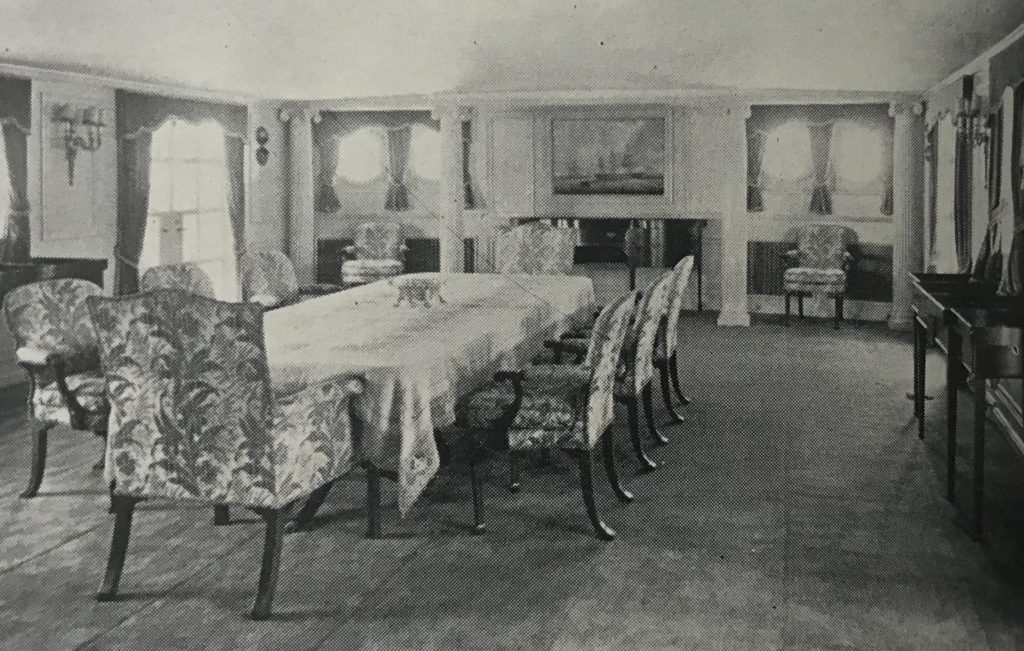
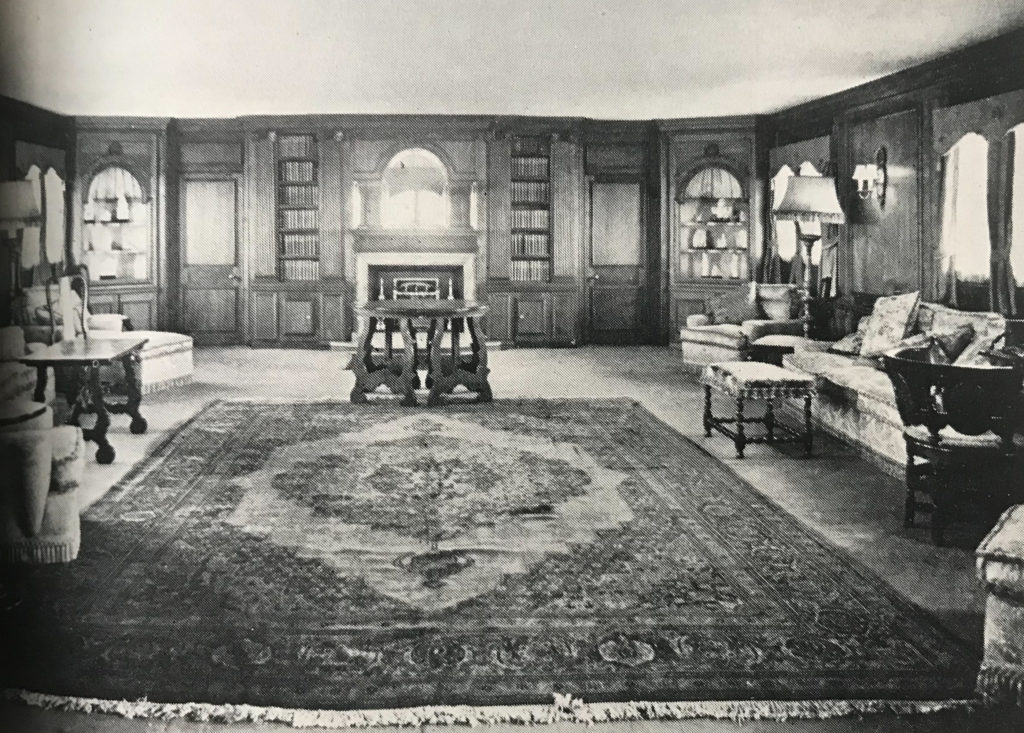
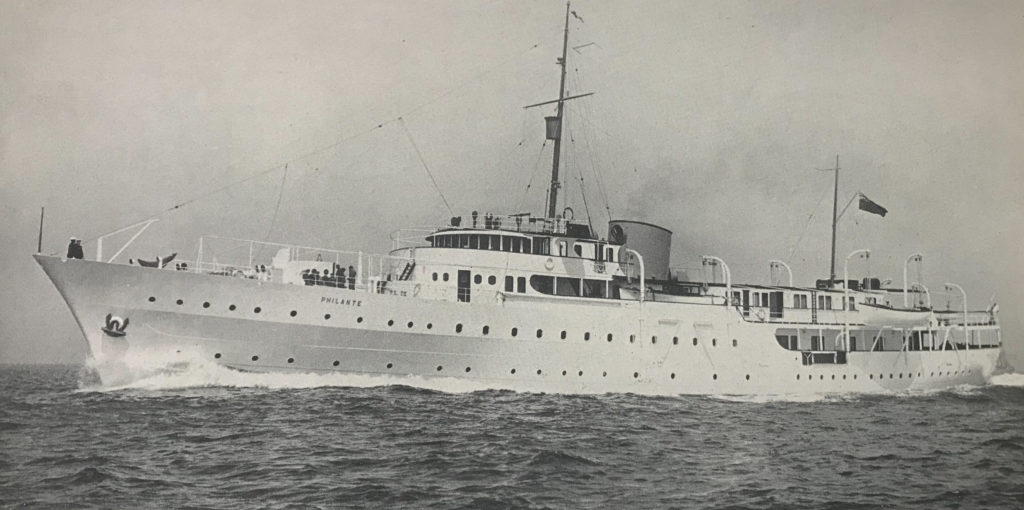
Photos of PHILANTE and her luxurious interior featured in Yachting Magazine, August, 1937. PHILANTE was built by Camper & Nicholsons; HMM archive
For many, a J-class America’s Cup contender or two might be enough. But ENDEAVOUR and ENDEAVOUR II were just part of the Sopwith fleet. The tenders for those racing boats progressed from a 170 ton to a 340 ton, 502 ton, and then 752 ton yacht. The ultimate creation though was PHILANTE, built to accompany ENDEAVOUR II to Newport for the Cup races. She was 263 feet long, 1,614 tons, featured 8 staterooms and had an operational crew of 42. Although built to tow ENDEAVOR II across the Atlantic, the private ocean liner was a floating manner house that also took the Sopwiths on many pleasure trips. On one of the two trips they made to the Galapagos, they returned to England with 12 penguins for the London Zoo. Amazingly, PHILANTE performed her intended duties for the Sopwiths for only two years. At the start of WWII she was requisitioned and refit for the war effort. Renamed NORGE after the war when sold to King Haakon, she continues on today as the royal Norwegian yacht.
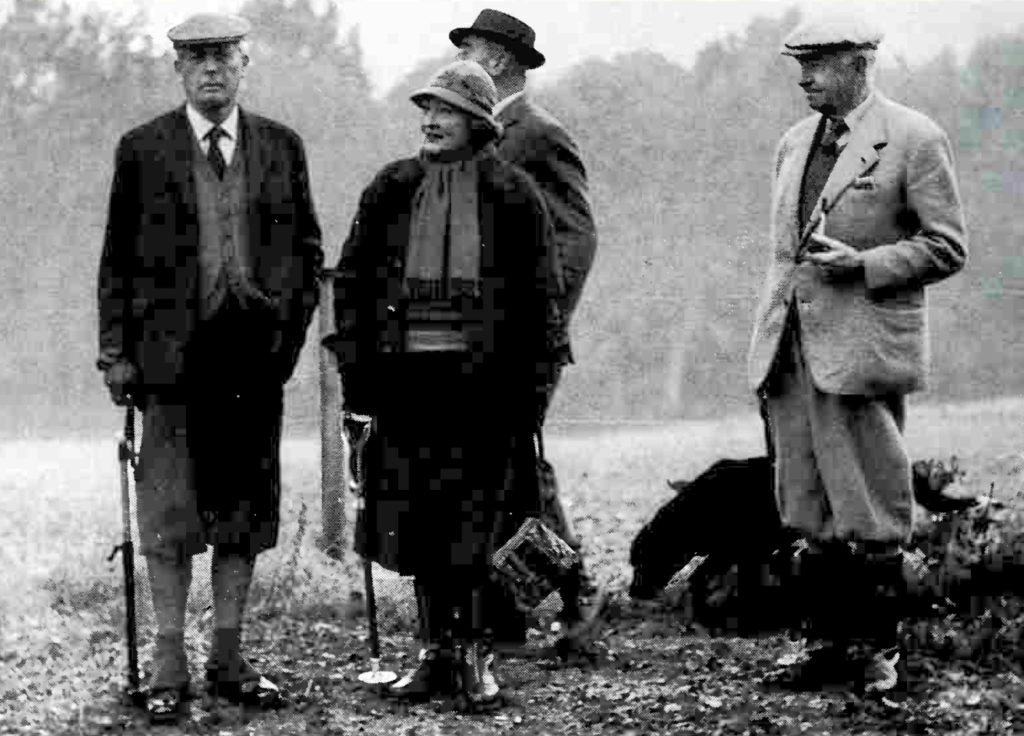
Although both were married before, and Sir Thomas quite happily so until his first wife died, T.O.M. and Phyllis' marriage was a long and well-suited pairing. Until Lady Sopwith's death at 85 in 1978, the two were rarely apart. Thomas said of the marriage, “We’ve had a wonderful life together because we’ve done everything together–stalking, shooting, fishing.” Lady Sopwith was such an avid marksman that her New York Times obituary recounts her asking for her pacemaker to be inserted on the left side so it wouldn’t get in the way of her shotgun.
While there is surprisingly little information in print about Phyllis Sopwith, the many photographs of her manage to convey a fully formed personality, allowing us to imagine the details for ourselves. Because they are all so clearly staged, created with intent and care, we are doing so just as she intended us to. Whatever else she may have been, we have no choice but to remember Lady Phyllis Sopwith at the helm of two great America’s Cup Challengers.
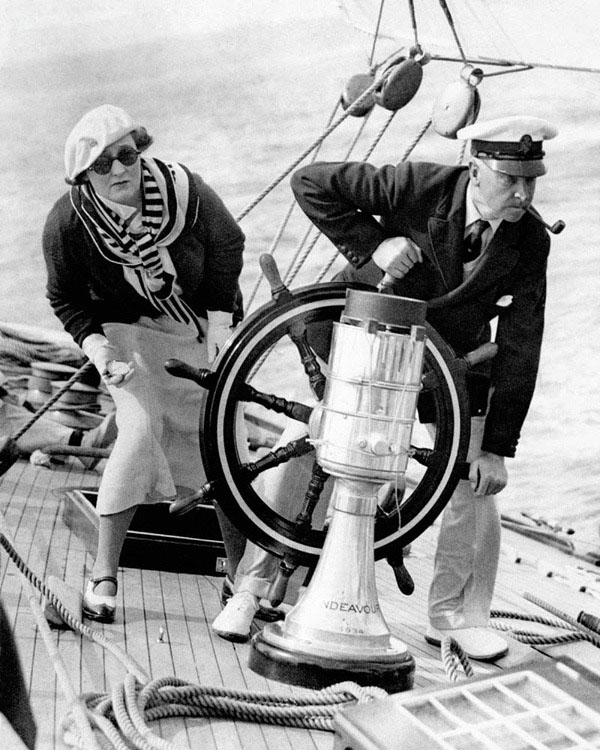
The Sopwiths on ENDEAVOUR I, 1934 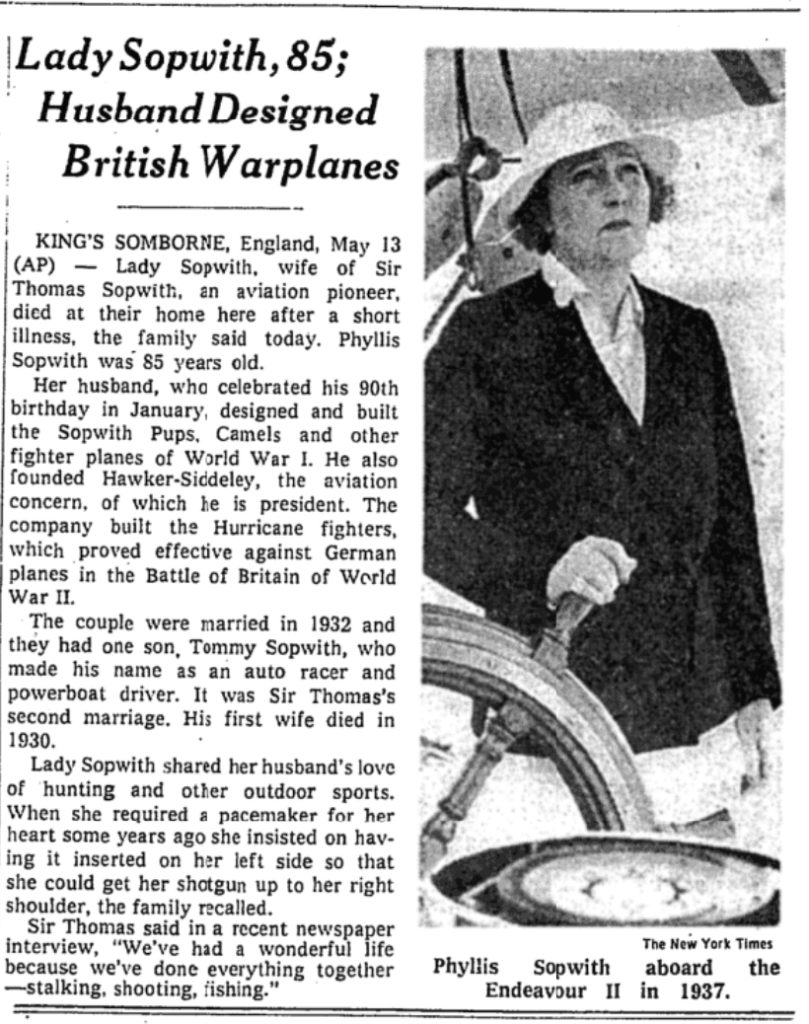
Lady Sopwith's obituary, published May 14, 1978 in the New York Times 
ENDEAVOUR I ahead of ENDEAVOUR II photographed by Arthur Lamsley. Published in Yachting Magazine, August 1937; HMM archive
Matthew Bird teaches Industrial Design and design History at Rhode Island School of Design. He has also curated numerous museum exhibitions related to the history of objects, design, and manufacturing.
